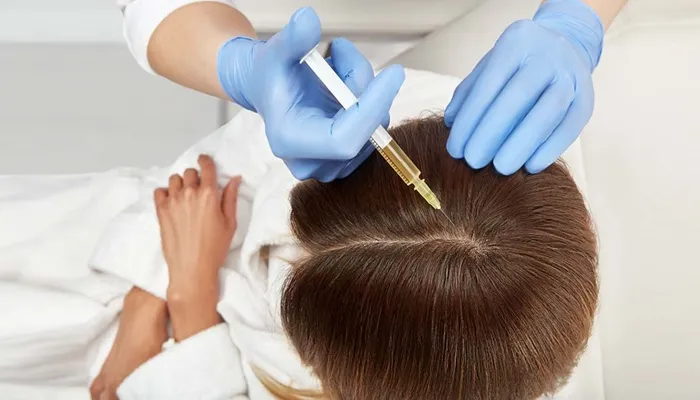Direct Hair Implantation (DHI) has emerged as a popular hair restoration technique, known for its precision and natural – looking results. One of the most frequently asked questions by potential patients is whether DHI requires shaving. The answer isn’t straightforward, as it depends on several factors, including the patient’s preferences, the extent of hair loss, and the surgeon’s recommendations. This article will explore the ins and outs of shaving in the context of DHI, helping patients make an informed decision.
Understanding the DHI Procedure
DHI is a specialized form of follicular unit extraction (FUE) hair transplant. In DHI, individual hair follicles are extracted from the donor area, typically the back or sides of the head, using a punch tool. What sets DHI apart is the use of the Choi Implanter Pen. This innovative device allows for the direct implantation of follicles into the recipient area without the need for pre – made incisions. The goal of DHI is to create a natural – looking hairline and restore hair density in areas affected by hair loss.
Shaving in DHI: The General Approach
Shaving for Easier Extraction and Implantation
In many cases, shaving the donor and recipient areas is recommended to facilitate the DHI procedure. Shaving the donor area makes it easier for the surgeon to identify and extract individual follicular units. The clear visibility of the scalp allows for more precise extraction, reducing the risk of damage to the follicles. Similarly, shaving the recipient area helps the surgeon make accurate incisions and implant the follicles at the correct angle and depth. This can lead to a more natural – looking result and a higher success rate of the transplant.
For patients with extensive hair loss, shaving may be necessary to ensure that the transplanted follicles blend in seamlessly with the remaining hair. Shaving also helps in post – operative care, as it reduces the risk of infection and makes it easier to clean the scalp.
Alternatives to Shaving in DHI
Unshaven DHI
In recent years, unshaven DHI has gained popularity. This technique allows patients to undergo a hair transplant without shaving their hair. Unshaven DHI is particularly appealing to patients who are concerned about the aesthetic impact of shaving, such as those in certain professions or social settings where a shaved head may not be acceptable.
During unshaven DHI, the surgeon carefully parts the hair to access the scalp. Specialized tools and techniques are used to extract and implant the follicles without cutting the hair shafts. While unshaven DHI can achieve good results, it poses some challenges. The presence of hair can make it more difficult for the surgeon to visualize the scalp, potentially increasing the risk of imprecise extraction and implantation. Additionally, the hair may interfere with the post – operative care process.
Factors to Consider When Deciding on Shaving
Patient Preferences
Ultimately, the decision to shave or not to shave during DHI should be based on the patient’s preferences. Some patients may be comfortable with shaving and see it as a small price to pay for a successful hair transplant. Others may be reluctant to shave, especially if they have long hair or are self – conscious about their appearance. It’s important for patients to discuss their concerns with the surgeon, who can provide personalized advice based on their individual situation.
Extent of Hair Loss
The extent of hair loss is another important factor to consider. Patients with severe hair loss may benefit more from shaving, as it allows for a more even distribution of transplanted follicles and a more natural – looking result. On the other hand, patients with mild to moderate hair loss may be able to opt for unshaven DHI, as the remaining hair can help camouflage the transplanted follicles.
Surgeon’s Expertise
The expertise of the surgeon also plays a crucial role in the success of unshaven DHI. Surgeons who are experienced in unshaven techniques are more likely to achieve good results. Patients should choose a surgeon who has a proven track record of performing unshaven DHI procedures.
Advantages and Disadvantages of Shaving in DHI
Advantages of Shaving
Precision: Shaving the scalp provides better visibility, allowing the surgeon to perform the extraction and implantation with greater precision.
Hygiene: Shaving reduces the risk of infection by making it easier to clean the scalp.
Blending: Shaving can help the transplanted follicles blend in more naturally, especially in patients with extensive hair loss.
Disadvantages of Shaving
Aesthetic Concerns: Shaving may be a concern for some patients, especially those who are self – conscious about their appearance.
Recovery Time: Shaving may slightly increase the recovery time, as the scalp is more exposed.
Conclusion
The question of whether DHI requires shaving doesn’t have a one – size – fits – all answer. Both shaving and unshaven DHI have their advantages and disadvantages, and the decision should be based on the patient’s preferences, the extent of hair loss, and the surgeon’s recommendations. By understanding the factors involved and having an open communication with the surgeon, patients can make an informed decision that will lead to a successful hair transplant.
Related topics:
- Does DHI Hair Transplant Work: Things You Need to Know
- Unshaven Hair Transplant: A Comprehensive Guide
- FUE vs. DHI Hair Transplant: What’s the Difference?


